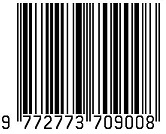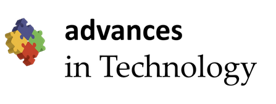Web-Based Visual Acuity Testing under Low-Resource Settings
DOI:
https://doi.org/10.31357/ait.v4i02.8022Keywords:
Low resource settings, Snellen chart, visual acuity, web application, paired t-testAbstract
Conventional eye examination tests are available to diagnose visual acuity; however, most of those cannot be performed in low-resource settings and require more money and technical resources. In this study, a novel web solution was developed to replace the traditional Snellen chart method for visual acuity. Numerous technologies pertinent to optimization under low-resource settings were thoroughly examined and integrated throughout the development process, encompassing web frameworks, database management systems, voice recording algorithms, and user
interface design. CodeIgniter was used as the framework of this developed system. After conducting tests with real
users and obtaining results, a statistical analysis based on the test results was performed. Thirty-four volunteers
participated in detecting a logMAR difference of 0.1 between the manual Snellen chart testing and web-based
application, assuming a paired t-test, a standard deviation of 0.2 (estimated from previous studies), 2-sided alpha (α)
of 0.05, and 80% power. The observations were independent, and the variables were normally distributed. Confidence interval limits were reported for 95%, with the standard deviation ± 1.96 from the mean, ± 0.2 logMAR. A vital feature of the system is its capability to perform a 10-ft and 20-ft eye test based on distance. The application scales the Snellen characters according to the test distance without affecting accuracy. Other unique features include automatic voice recording, automatic Snellen level change and character scaling, storing previous readings for future evaluations, and comparing them with current readings. The accuracy of the eyes, as well as their errors, are displayed to users according to international standards. Our web application produced results almost identical to those of the manual Snellen procedure, even under low resource settings, when compared to the manual Snellen procedure
Downloads
Published
How to Cite
License
Copyright (c) 2025 Ishanka Divanjana, Binura Wickramanayake, Deelaka Naotunna, Nalaka Lankasena, Himanshi Liyanage

This work is licensed under a Creative Commons Attribution-NonCommercial-NoDerivatives 4.0 International License.
The Authors hold the copyright of their manuscripts, and all articles are circulated under the terms of the Creative Commons Attribution License, which permits unrestricted use, distribution, and reproduction in any medium, as long as that the original work is properly cited.
The use of general descriptive names, trade names, trademarks, and so forth in this publication, even if not specifically identified, does not imply that these names are not protected by the relevant laws and regulations. The authors are responsible for securing any permissions needed for the reuse of copyrighted materials included in the manuscript.




